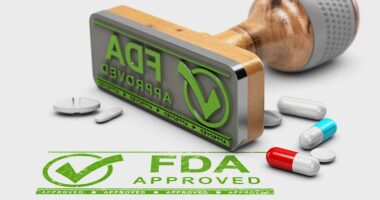Tracking the Fortunes of New Biologics
The pharmaceutical industry has intensified its new product development efforts in biologics, but has it paid off? A look at the most successful biologic-based drugs launched over the past five years.
As the industry gathers this week for the Biotechnology Industry Association’s International Convention in San Diego, all attention is focused on biologics. New product development is one way to measure the success of this product area. So how has the industry fared over the last five years in developing new biologic-based drugs? DCAT Value Chain Insights examines the key performers.
Increasing market penetration
Biologics represent a growing part of the overall pharmaceutical market. In 2007, biologics accounted for 15% of the global pharmaceutical market, and in 2012, this share had increased to 18% or $169 billion, according to the IMS Institute for Healthcare Informatics (1). By 2017, biologics are expected to represent 19–20% of the global pharmaceutical market or $221 billion (1). The inroads of biologics is also evident in the ranking of the top 20 global pharmaceutical products, which now include nine biologics, and five biologics in the top 10 products based on data from IMS as of December 2013 (2). The top-selling drug is a biologic, Humira (adalimumab). Other biologics in the top 10 products are Enbrel (etanercept) (ranked fourth), Lantus (insulin glargine) (ranked fifth), Remicade (infliximab) (ranked eighth), and MabThera/Rituxan (rituximab) (ranked tenth). Rounding out the top 20 pharmaceutical products are Avastin (bebacizumab) (ranked eleventh), Herceptin (trastuzumab) (ranked thirteenth), Lucentis (ranibizumab) (ranked seventeenth), and Neulasta (pegfilgrastim) (ranked eighteenth),according to IMS. The emergence of biologics among the top pharmaceutical products is a byproduct of increased sales for select products as well as the fall in revenues of certain small molecules due to generic-drug incursion, such as Lipitor (atorvastatin) and Plavix (clopidogrel), which were respectively ranked as the number one and number two top-selling global pharmaceutical products in 2011. Other key small molecules that had been in the top 20 pharmaceutical products in 2011 but which fell out of the rankings due to generic competition are: Singulair (montelukast) (ranked eleventh in 2011) and Zyprexa (olanzapine), (ranked twelfth in 2011) (2,3).
New biologics
Although the increased market share of biologics overall and their ascent among the top 20 pharmaceutical products are two indicators of increasing market strength, another important barometer is to look at recent new drug approvals and the commercial success of these products. Thus far in 2014, 17 new molecular entities (NMEs), which cover both new drug applications (NDAs) and biologics license applications (BLAs), were approved the US Food and Drug Administration’s (FDA) Center for Drug Evaluation and Research (CDER). Of these 17 NMEs, 35%, or six, are biologics (see Table I) based on NME approvals by FDA’s CDER through June 20, 2014.
Four of the six biologics approved in 2014 are orphan drugs. AstraZeneca’s Myalept (metreleptin) is a recombinant analog (laboratory-created form) of human leptin as a replacement therapy to treat the complications of leptin deficiency, in addition to diet, in patients with congenital generalized or acquired generalized lipodystrophy. AstraZeneca gained full rights to Myalept as part of its $2.7-billion acquisition of its diabetes alliance with Bristol-Myers Squibb, which included Bristol-Myers’ 2012 acquisition of Amylin Pharmaceuticals, the original developers of Myalept. Three other biologic orphan drugs have been approved in 2014. Eli Lilly received FDA approval for Cyramza (ramucirumab) to treat advanced stomach cancer or gastroesophageal junction adenocarcinoma. Janssen Biotech received FDA approval for Sylvant (siltuximab), a drug to treat patients with multicentric Castleman’s disease. BioMarin Pharmaceuticals received FDA approval for Vimizin (elosulfase alfa) for treating the ultra-rare lysosomal storage disorder Morquio A syndrome.
| Table I: New Molecular Entities (Original Biologics License Applications) as approved by FDA’s Center for Drug Evaluation and Research, 2014 (as of June 20, 2014).
|
||
| Company | Proprietary name (active ingredient)
|
Indication |
| AstraZeneca | Myalept (metreleptin) | To treat metabolic disorders secondary to lipodystrophy |
| Biomarin Pharmaceutical | Vimizin (elosulfase alfa) | To treat Mucopolysaccharidosis Type IVA (Morquio A syndrome) |
| Eli Lilly | Cyramza (ramucirumab) | To treat advanced stomach cancer or gastroesophageal junction adenocarcinoma |
| GlaxoSmithKline | Tanzeum (albiglutide) | To improve glycemic control, along with diet and exercise, in adults with type 2 diabetes |
| Janssen Biotech | Sylvant (siltuximab) | To treat patients with multicentric Castleman’s disease |
| Takeda Pharmaceutical | Entyvio (vedolizumab) | To treat adults with moderate- to severe ulcerative colitis and Crohn‘s disease |
| As approved by the US Food and Drug Administration’s (FDA) Center for Drug Evaluation and Research through June 20, 2014.
AstraZeneca is working to complete the transfer of the biologics license application for Myalept from Bristol-Myers Squibb to AstraZeneca as part of AstraZeneca’s acquisition of the diabetes alliance with Bristol-Myers Squibb, which included Myalept and Amylin Pharmaceuticals; that acquisition was completed on February 1, 2014. |
||
The other two biologics approved by FDA’s CDER thus far in 2014 are from GlaxoSmithKline (GSK) and Takeda Pharmaceutical for broader indications. GSK received FDA approval for its diabetes drug Tanzeum (albiglutide) in April 2014. Albiglutide, a glucagon-like peptide-1 (GLP-1) receptor agonist is a biological product for treating Type 2 diabetes, administered once-weekly using an injector pen. It is a recombinant fusion protein comprised of two tandem copies of modified human GLP-1 genetically fused in tandem to human albumin. Glucagon-like peptide-1 is an important incretin hormone that helps reduce blood glucose levels but, in people with Type 2 diabetes, its production is often reduced or absent, according to a GSK press release. GSK anticipates the US launch of Tanzeum in the third quarter of 2014. Albiglutide was licensed by the European Medicines Agency in March 2014, under the brand name Eperzan.
In gaining approval for Tanzeum, GSK will be competing against other GLP-1 agonists: AstraZeneca’s Byetta (exenatide injection) and Bydureon (exenatide extended-release injectable suspension) and Novo Nordisk’s Victoza (liraglutide). Sanofi’s Lyxumia (lixisenatide) was in-licensed from Zealand Pharma A/S and is approved in Europe for the treatment of adults with Type 2 diabetes mellitus to achieve glycemic control in combination with oral glucose-lowering medicinal products and/or basal insulin when these, together with diet and exercise, do not provide adequate glycemic control. Lyxumia is also approved in Mexico, Australia, Japan, and Brazil for the treatment of adults with Type 2 diabetes. Sanofi plans to resubmit the new drug application for lixisenatide in the United States in 2015, after completion of the ELIXA cardiovascular outcomes study.
In another NME approval in 2014, Takeda received approval for Entyvio (vedolizumab) for treating adult patients with moderate to severe ulcerative colitis and adult patients with moderate to severe Crohn‘s disease. Entyvio is approved to treat those conditions when one or more standard therapies (corticosteroids, immunomodulators, or tumor necrosis factor blocker medications) have not resulted in an adequate response. Entyvio is an integrin receptor antagonist. Integrin receptors are proteins expressed on the surface of certain cells. Integrin receptors function as bridges for cell-cell interactions. Entyvio blocks the interaction of a specific integrin receptor (expressed on circulating inflammatory cells) with a specific protein (expressed on cells in the interior wall of blood vessels), and thereby blocks the migration of those circulating inflammatory cells across those blood vessels and into areas of inflammation in the gastrointestinal tract.
Top performers among recent biologic approvals
Between 2010 and 2013, 20 biologics were approved as NMEs (original BLAs) by FDA’s CDER (see Table II). These included two BLA approvals in 2013, and six each respectively in 2012, 2011, and 2010. In 2013, Roche/Genentech accounted for both BLA approvals from FDA’s CDER: Kadcyla (ado-trastuzumab emtansine), an antibody drug conjugate to treat HER2-positive late-stage (metastatic) breast cancer, and Gazyva (obinutuzumab), which was approved in combination with chlorambucil to treat previously untreated chronic lymphocytic leukemia. Overall in 2013, 27 NMEs (NDAs and BLAs) were approved by FDA’s CDER; the two biologic approvals accounted then for 7.4% of these NME approvals.
| Table II: New Molecular Entities (Original Biologics License Applications (BLAs) as approved by FDA’s Center for Drug Evaluation and Research (CDER), 2010–2013.
|
||
| 2013 BLA Approvals by FDA’s CDER
|
||
| Company | Proprietary Name (Active Ingredient)
|
Indication |
| Roche/Genentech | Gazyva (obinutuzumab) | In combination with chlorambucil to treat previously untreated chronic lymphocytic leukemia |
| Roche/Genentech | Kadcyla (ado-trastuzumab emtansine | HER2-positive metastatic breast cancer |
| 2012 BLA Approvals by FDA’s CDER
|
||
| Company | Proprietary Name (Active Ingredient)
|
Indication |
| BTG International | Voraxaze (glucarpidase) | Toxic plasma methotrexate concentrations in patients with delayed methotrexate clearance due to impaired renal function. |
| GlaxoSmithKline/Human Genome Sciences | Raxibacumab | Inhalational anthrax |
| Roche/Genentech | Perjeta (pertuzumab) | HER2-positive metastatic breast cancer. |
| Sanofi | Zaltrap (ziv-afibercept) | Metastatic colorectal cancer |
| Teva Pharmaceutical | Neutroval (TBO-filgrastim) | Chemotherapy-induced neutropenia |
| ThromboGenics | Jetrea (ocriplasmin) | Symptomatic vitreomacular adhesion |
| 2011 BLA Approvals by FDA’s CDER
|
||
| Company | Proprietary Name (Active Ingredient)
|
Indication |
| Bristol-Myers Squibb | Nulojix (belatacept) | To prevent acute rejection in adult patients who have had a kidney transplant |
| Bristol-Myers Squibb | Yervoy (ipilimumab) | Melanoma |
| EUSA Pharma | Erwinaze (asparaginase Erwinja chrysanthemi) | Acute lymphoblastic leukemia |
| GlaxoSmithKline/Human Genome Sciences | Benlysta (belimumab) | Systemic lupus erythematosus |
| Regeneron Pharmaceuticals | Eylea (aflibercept) | Wet age-related macular degeneration and macular edema |
| Seattle Genetics and Takeda Pharmaceutical | Adcetris (brentuximab vedotin) | Hodgkin’s lymphoma and systemic anaplastic large cell lymphoma |
| 2010 BLA Approvals by FDA’s CDER
|
||
| Company | Proprietary Name (Active Ingredient)
|
Indication |
| Amgen | Prolia (denosumab) | Postmenopausal osteoporosis |
| Auxilium Pharmaceuticals | Xiaflex (clostridal collagenase) | Adult Dupuytren’s contracture (DC) patients with a palpable cord |
| Merz Pharmaceuticals | Xeomin (onabotulinumtoxinA) | Cervical dystonia, blepharospasm, and temporary improvement in the appearance of moderate to severe glabellar lines |
| Roche/Genentech | Acterma (tocilizumab) | Moderate-to-severe rheumatoid arthritis and systemic juvenile idiopathic arthritis |
| Sanofi/Genzyme | Lumizyme (alglucosidase alfa) | Pompe disease |
| Savient Pharmaceuticals/Crealta Pharmaceuticals | Krystexxa (pegloticase) | Treatment-resistant chronic gout |
Alcon, a division of Novartis, acquired the rights to commercialize Jetrea outside the United States from the ThromboGenics, which retains the rights to commercialize the drug in the US. GlaxoSmithKline acquired Human Genome Science in 2012. Sanofi acquired Genzyme in 2011. Sanofi developed Zaltrap with Regeneron Pharmaceuticals. Savient Pharmaceuticals declared bankruptcy in 2013 and was subsequently acquired by Crealta Pharmaceuticals in 2014. Seattle Genetics holds commercialization rights to Adcetris in the US and Canada;Takeda has right to commercialize Adcetris in all other countries. Teva’s tbo-filgrastim was approved as an original BLA and not as a biosimiliar to Amgen’s Neupogen (filgrastim), which is a previously approved biologic. Crealta Pharmaceuticals. Source: US Food and Drug Administration |
||
In 2012, 39 NMEs were approved by FDA’s CDER, and the six BLAs accounted for 15.4% of NME approvals. In 2011, 30 NMEs were approved, and the six BLAs accounted for 20% of NME approvals. In 2010, 21 NMEs were approved by FDA’s CDER, and six, or nearly 29%, were biologics (see Table II).
Overall, Roche/Genentech led all the large pharmaceutical companies with biologic approvals between 2010 and 2013. In addition to receiving approval for Kadcyla and Gazyva in 2013, Roche/Genentech gained FDA approval for two additional biologics: in 2012 for Perjeta (pertuzumab), a drug to treat HER2-positive metastatic breast cancer, and in 2010 for Acterma (tocilizumab) to treat moderate-to-severe rheumatoid arthritis and systemic juvenile idiopathic arthritis.Through its acquisition of Human Genome Sciences in 2012, GSK gained two biologic approvals between 2010 and 2013. It received approval for raxibacumab, a human monoclonal antibody a drug to treat inhalational anthrax, in December 2012, for the treatment of inhalational anthrax due to Bacillus anthracis in combination with appropriate antibacterial drugs, and for prophylaxis of inhalational anthrax when alternative therapies are not available or are not appropriate. In 2011, GSK also received approval of Benlysta (belimumab) for treating systemic lupus erythematosus.
Bristol-Myers Squibb also had two biologic-based NMEs approved during this period. In 2011, Bristol-Myers Squibb received approval of Nulojix (belatacept), a drug to prevent acute rejection in adult patients who have had a kidney transplant, and for Yervoy (ipilimumab) for treating melanoma. In 2012, Sanofi received FDA approval for Zaltrap (ziv-afibercept) for treating metastatic colorectal cancer. Sanofi developed Zaltrap with Regeneron Pharmaceuticals, who received FDA approval in 2011 for Eylea (aflibercept) to treat wet age-related macular degeneration and macular edema following central retinal vein occlusion. Regeneron has the rights to Eylea in the United States, and Bayer outside the United States. Genzyme, which was later acquired by Sanofi in 2011, received approval of Lumizyme (alglucosidase alfa) in 2010 to treat Pompe disease. Also, Thrombogenics received FDA approval for Jetrea in 2012. Alcon, a division of Novartis, has rights to Jetrea outside the United States.
Given that product sales are dependent on how long a new drug has been on the market to achieve market penetration, the crop of new biologics from 2010 to 2013 has produced two blockbusters (defined as a product with global sales of $1 billion or more) and several strong-performing drugs. Amgen’s Prolia/Xgeva (denosumab) had combined 2013 sales of $1.8 billion. In 2010, Prolia was approved in the US for use in postmenopausal women with risk of osteoporosis and as Xgeva in Europe for the prevention of skeleton-related events in patients with bone metastases from solid tumors. Roche/Genentech’s Actemra/RoActemra recorded 2013 sales of CHF 1.037 billion ($1.158 billion). Other strong performers were Bristol-Myers Squibb’s Yervoy, which had 2013 sales of $960 million. Roche’s Kadcyla recorded 2013 sales of CHF 234 million ($261 million), and Roche’s Perjeta recorded 2013 sales of CHF 326 million ($364 million). Combined 2013 sales of Eylea were $472 million, which included $402 million for US sales for Regeneron. Combined 2013 sales of Sanofi/Genzyme’s Lumizyme/Myozyme were EUR 500 million ($680 million).
References
1. IMS Institute for Healthcare Informatics, “Global Use of Medicines Outlook Through 2017 (November 2013).
2. IMS Health, Top 20 Pharmaceutical Products 2013, December 2013.
3. IMS Health, Top 20 Pharmaceutical Products 2011, December 2011.






